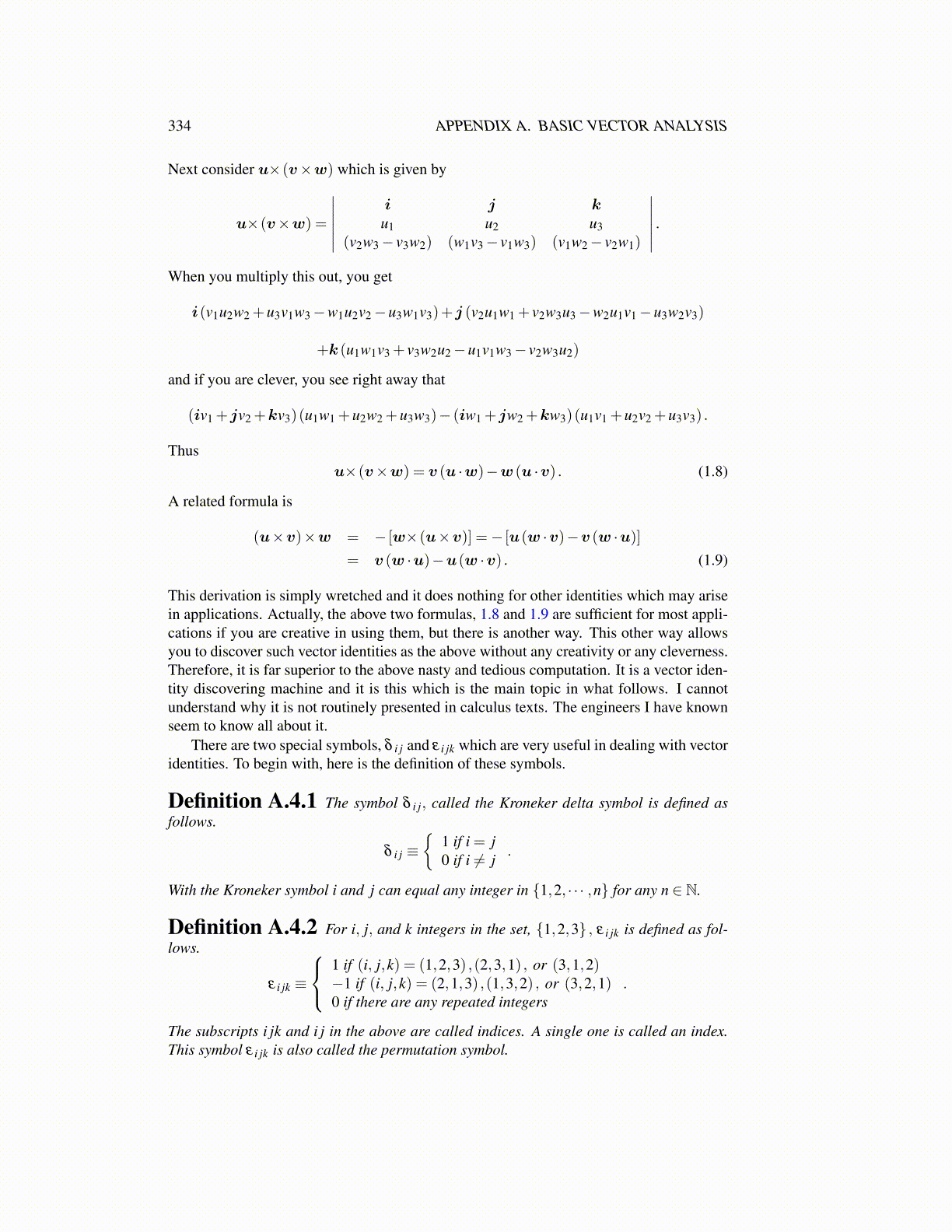
334 APPENDIX A. BASIC VECTOR ANALYSIS
Next consider u×(v×w) which is given by
u×(v×w) =
∣∣∣∣∣∣i j k
u1 u2 u3(v2w3− v3w2) (w1v3− v1w3) (v1w2− v2w1)
∣∣∣∣∣∣ .When you multiply this out, you get
i(v1u2w2 +u3v1w3−w1u2v2−u3w1v3)+j (v2u1w1 + v2w3u3−w2u1v1−u3w2v3)
+k (u1w1v3 + v3w2u2−u1v1w3− v2w3u2)
and if you are clever, you see right away that
(iv1 +jv2 +kv3)(u1w1 +u2w2 +u3w3)− (iw1 +jw2 +kw3)(u1v1 +u2v2 +u3v3) .
Thusu×(v×w) = v (u ·w)−w (u ·v) . (1.8)
A related formula is
(u×v)×w = − [w×(u×v)] =− [u(w ·v)−v (w ·u)]= v (w ·u)−u(w ·v) . (1.9)
This derivation is simply wretched and it does nothing for other identities which may arisein applications. Actually, the above two formulas, 1.8 and 1.9 are sufficient for most appli-cations if you are creative in using them, but there is another way. This other way allowsyou to discover such vector identities as the above without any creativity or any cleverness.Therefore, it is far superior to the above nasty and tedious computation. It is a vector iden-tity discovering machine and it is this which is the main topic in what follows. I cannotunderstand why it is not routinely presented in calculus texts. The engineers I have knownseem to know all about it.
There are two special symbols, δ i j and ε i jk which are very useful in dealing with vectoridentities. To begin with, here is the definition of these symbols.
Definition A.4.1 The symbol δ i j, called the Kroneker delta symbol is defined asfollows.
δ i j ≡{
1 if i = j0 if i ̸= j .
With the Kroneker symbol i and j can equal any integer in {1,2, · · · ,n} for any n ∈ N.
Definition A.4.2 For i, j, and k integers in the set, {1,2,3} , ε i jk is defined as fol-lows.
ε i jk ≡
1 if (i, j,k) = (1,2,3) ,(2,3,1) , or (3,1,2)−1 if (i, j,k) = (2,1,3) ,(1,3,2) , or (3,2,1)0 if there are any repeated integers
.
The subscripts i jk and i j in the above are called indices. A single one is called an index.This symbol ε i jk is also called the permutation symbol.